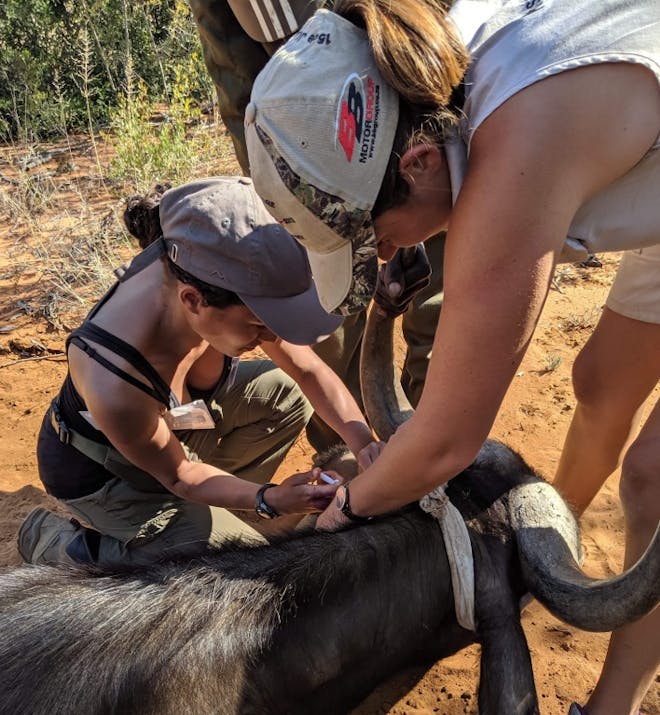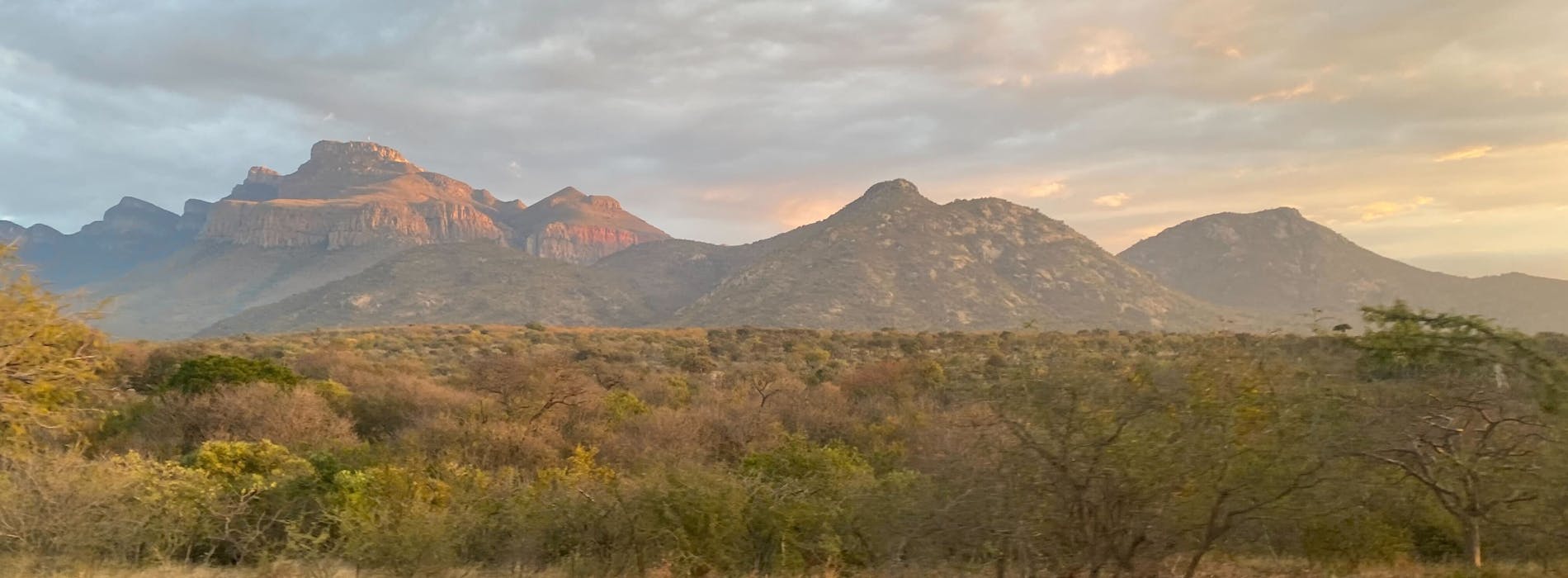
One of the main things that was getting me through my nursing course was that I could use my skills and travel once I qualified. So, as soon as I found out a passed my veterinary nursing course, I booked two projects with African Conservation Experience (ACE).
I had already heard a lot about the Care for Wild project, through friends that had previously taken part and loved it. I knew for sure that I wanted to help on this project, especially due to the Rhino Crisis.
As I wanted to utilise my vet nursing skills, I also booked the Shimongwe Wildlife Veterinary Experience.
During my 2 week stay on the Shimongwe Wildlife veterinary project, I learnt a lot about wildlife veterinary medicine. I knew it would be different to my usual work with domestic pets, however I had never really thought about the danger involved. The vet was a great teacher and gave us a lecture on the dangerous drugs used and health & safety. We would be working with large animals, such as buffalo, kudu and sable antelope, so this information was very important. A lot of the work we did was relocation from various farms and TB testing on buffalo. The vet also has a small veterinary clinic, where I assisted with cat castrates, wound checks and post-mortems.
One of my favourite days was when we had to microchip and TB test 20 buffalo. This was no easy task, as the vet had to find the correct buffalo from a helicopter and sedate them from the air. We then had to act quickly to ensure we performed all the tasks needed and wake them back up. We worked with the State Vet to obtain blood samples, TB test, microchip, and treat the dart site. It was an extremely tiring day as we worked hard, but everything went to plan and we worked well together.
I would recommend this project to anyone who is thinking about working as a wildlife vet. You get a lot of hands on experience and also get to learn about common diseases and medications used in the field.



During my 2 week stay with Care for Wild, I helped out with the general care of the orphaned rhinos and other animals in their care. My working day was between 6.30am to 4pm, with breaks for breakfast and lunch. Your day is filled with a lot of hard work, including cleaning the bomas and feeding the animals. However these tasks allow the centre to run smoothly, with the animals care always being the priority. The staff also run lectures on various topics, including de-horning, re-introduction into the field and boma management & cleaning. You will learn a lot about every aspect of caring for rhinos and get a good insight into the rhino crisis. If you don’t already know, a rhino is killed every 8 hours for its horn— a horn that is made from keratin, the same as our fingernails. All the team are extremely passionate about the work they do to help save the rhinos and are doing an amazing job!
I would recommend this project to everyone, especially to those who have a love of rhinos or a passion for wildlife conservation, as you will experience first-hand the journey an orphan rhino has to go on. Please note that this project does not include rhino cuddling or interactions (apart from feeding), but what you will get out of it is worth much more than that.
For me, volunteering is very rewarding, and I love the feeling that I’ve been able to help a good cause. The projects do require a lot of hard work, but you do gain a lot of new skills and experiences. You also meet a lot of like-minded people and make good friends (so travelling alone is fine)!




